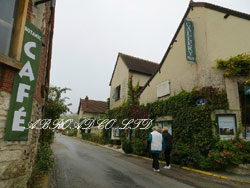how to calculate rate of disappearancehouses for rent wilmington, nc under $1000
how to calculate rate of disappearance
- フレンチスタイル 女性のフランス旅行をサポート
- 未分類
- how to calculate rate of disappearance
To do this, he must simply find the slope of the line tangent to the reaction curve when t=0. Firstly, should we take the rate of reaction only be the rate of disappearance/appearance of the product/reactant with stoichiometric coeff. Why are physically impossible and logically impossible concepts considered separate in terms of probability? Why do many companies reject expired SSL certificates as bugs in bug bounties? Accessibility StatementFor more information contact us atinfo@libretexts.orgor check out our status page at https://status.libretexts.org. There are several reactions bearing the name "iodine clock." In addition, only one titration attempt is possible, because by the time another sample is taken, the concentrations have changed. This is the answer I found on chem.libretexts.org: Why the rate of O2 produce considered as the rate of reaction ? In the example of the reaction between bromoethane and sodium hydroxide solution, the order is calculated to be 2. Direct link to Omar Yassin's post Am I always supposed to m, Posted 6 years ago. There are two important things to note here: What is the rate of ammonia production for the Haber process (Equation \ref{Haber}) if the rate of hydrogen consumption is -0.458M/min? This process is repeated for a range of concentrations of the substance of interest. Why is the rate of disappearance negative? 14.1.7 that for stoichiometric coefficientsof A and B are the same (one) and so for every A consumed a B was formed and these curves are effectively symmetric. Here, we have the balanced equation for the decomposition Now we'll notice a pattern here.Now let's take a look at the H2. If humans live for about 80 years on average, then one would expect, all things being equal, that 1 . Solved Please help for Part C. How do I calculate the | Chegg.com Conservation - Calculating background extinction rates On the other hand we could follow the product concentration on the product curve (green) that started at zero, reached a little less than 0.4M after 20 seconds and by 60 seconds the final concentration of 0.5 M was attained.thethere was no [B], but after were originally 50 purple particles in the container, which were completely consumed after 60 seconds. How to calculate rate of reaction | Math Preparation and the rate of disappearance of $\ce{NO}$ would be minus its rate of appearance: $$-\cfrac{\mathrm{d}\ce{[NO]}}{\mathrm{d}t} = 2 r_1 - 2 r_2$$, Since the rates for both reactions would be, the rate of disappearance for $\ce{NO}$ will be, $$-\cfrac{\mathrm{d}\ce{[NO]}}{\mathrm{d}t} = 2 k_1 \ce{[NO]}^2 - 2 k_2 \ce{[N2O4]}$$. why we chose O2 in determining the rate and compared the rates of N2O5 and NO2 with it? How do you calculate the average rate of a reaction? | Socratic In your example, we have two elementary reactions: $$\ce {2NO -> [$k_1$] N2O4} \tag {1}$$ $$\ce {N2O4 -> [$k_2$] 2NO} \tag {2}$$ So, the rate of appearance of $\ce {N2O4}$ would be We can normalize the above rates by dividing each species by its coefficient, which comes up with a relative rate of reaction, \[\underbrace{R_{relative}=-\dfrac{1}{a}\dfrac{\Delta [A]}{\Delta t} = - \dfrac{1}{b}\dfrac{\Delta [B]}{\Delta t} = \dfrac{1}{c}\dfrac{\Delta [C]}{\Delta t} = \dfrac{1}{d}\dfrac{\Delta [D]}{\Delta t}}_{\text{Relative Rate of Reaction}}\]. If possible (and it is possible in this case) it is better to stop the reaction completely before titrating. If you're behind a web filter, please make sure that the domains *.kastatic.org and *.kasandbox.org are unblocked. Either would render results meaningless. And let's say that oxygen forms at a rate of 9 x 10 to the -6 M/s. Calculate the rates of reactions for the product curve (B) at 10 and 40 seconds and show that the rate slows as the reaction proceeds. Direct link to Oshien's post So just to clarify, rate , Posted a month ago. The timer is used to determine the time for the cross to disappear. All right, what about if You note from eq. - the rate of appearance of NOBr is half the rate of disappearance of Br2. We also acknowledge previous National Science Foundation support under grant numbers 1246120, 1525057, and 1413739. - 0.02 here, over 2, and that would give us a Let's use that since that one is not easy to compute in your head. In either case, the shape of the graph is the same. Rates of Disappearance and Appearance Loyal Support How to calculate instantaneous rate of disappearance For example, the graph below shows the volume of carbon dioxide released over time in a chemical reaction. Direct link to putu.wicaksana.adi.nugraha's post Why the rate of O2 produc, Posted 6 years ago. Example \(\PageIndex{4}\): The Iodine Clock Reactions. Because remember, rate is . Like the instantaneous rate mentioned above, the initial rate can be obtained either experimentally or graphically. The reaction rate for that time is determined from the slope of the tangent lines. of dinitrogen pentoxide into nitrogen dioxide and oxygen. So I can choose NH 3 to H2. We want to find the rate of disappearance of our reactants and the rate of appearance of our products.Here I'll show you a short cut which will actually give us the same answers as if we plugged it in to that complicated equation that we have here, where it says; reaction rate equals -1/8 et cetera. So this is our concentration The process starts with known concentrations of sodium hydroxide and bromoethane, and it is often convenient for them to be equal. The reaction can be slowed by diluting it, adding the sample to a larger volume of cold water before the titration. Because the initial rate is important, the slope at the beginning is used. Now, we will turn our attention to the importance of stoichiometric coefficients. and so the reaction is clearly slowing down over time. What is the formula for rate of disappearance? [Updated!] How to calculate instantaneous rate of disappearance Are, Learn However, using this formula, the rate of disappearance cannot be negative. However, when that small amount of sodium thiosulphate is consumed, nothing inhibits further iodine produced from reacting with the starch. The actual concentration of the sodium thiosulphate does not need to be known. The rate of reaction is measured by observing the rate of disappearance of the reactants A or B, or the rate of appearance of the products C or D. The species observed is a matter of convenience. The LibreTexts libraries arePowered by NICE CXone Expertand are supported by the Department of Education Open Textbook Pilot Project, the UC Davis Office of the Provost, the UC Davis Library, the California State University Affordable Learning Solutions Program, and Merlot. How is rate of disappearance related to rate of reaction? It would have been better to use graph paper with a higher grid density that would have allowed us to exactly pick points where the line intersects with the grid lines. concentration of A is 1.00. How do you calculate the rate of a reaction from a graph? The instantaneous rate of reaction is defined as the change in concentration of an infinitely small time interval, expressed as the limit or derivative expression above. For the reaction 2A + B -> 3C, if the rate of disappearance of B is "0. 5. 2023 Brightstorm, Inc. All Rights Reserved. How to calculate the outside diameter of a pipe | Math Applications So I need a negative here. Rather than performing a whole set of initial rate experiments, one can gather information about orders of reaction by following a particular reaction from start to finish. Chemical Kinetics - Notes on Rate Of Reaction, Formulas, Questions, - BYJUS 14.1.3 will be positive, as it is taking the negative of a negative. more. What am I doing wrong here in the PlotLegends specification? By clicking Post Your Answer, you agree to our terms of service, privacy policy and cookie policy. - The rate of a chemical reaction is defined as the change If the two points are very close together, then the instantaneous rate is almost the same as the average rate. A rate law shows how the rate of a chemical reaction depends on reactant concentration. Rate of disappearance is given as [ A] t where A is a reactant. How to calculate instantaneous rate of disappearance By clicking Accept all cookies, you agree Stack Exchange can store cookies on your device and disclose information in accordance with our Cookie Policy. Measure or calculate the outside circumference of the pipe. Sort of like the speed of a car is how its location changes with respect to time, the rate is how the concentrationchanges over time. Direct link to yuki's post Great question! Medium Solution Verified by Toppr The given reaction is :- 4NH 3(g)+SO 2(g)4NO(g)+6H 2O(g) Rate of reaction = dtd[NH 3] 41= 41 dtd[NO] dtd[NH 3]= dtd[NO] Rate of formation of NO= Rate of disappearance of NH 3 =3.610 3molL 1s 1 Solve any question of Equilibrium with:- Patterns of problems Notice that this is the overall order of the reaction, not just the order with respect to the reagent whose concentration was measured. All rates are positive. Each produces iodine as one of the products. You should contact him if you have any concerns. When this happens, the actual value of the rate of change of the reactants \(\dfrac{\Delta[Reactants]}{\Delta{t}}\) will be negative, and so eq. In each case the relative concentration could be recorded. Using Figure 14.4, calculate the instantaneous rate of disappearance of C4H9Cl at t = 0 Do my homework for me Determine the initial rate of the reaction using the table below. The rate of concentration of A over time. The react, Posted 7 years ago. What is disappearance rate? - KnowledgeBurrow.com So what is the rate of formation of nitrogen dioxide? Just figuring out the mole ratio between all the compounds is the way to go about questions like these. 12.1 Chemical Reaction Rates - Chemistry 2e | OpenStax Say for example, if we have the reaction of N2 gas plus H2 gas, yields NH3. If I want to know the average 14.2: Measuring Reaction Rates - Chemistry LibreTexts Direct link to jahnavipunna's post I came across the extent , Posted 7 years ago. For example if A, B, and C are colorless and D is colored, the rate of appearance of . Table of Contents show The rate of reaction, often called the "reaction velocity" and is a measure of how fast a reaction occurs. Then basically this will be the rate of disappearance. Molar per second sounds a lot like meters per second, and that, if you remember your physics is our unit for velocity. What is rate of disappearance and rate of appearance? So this will be positive 20 Molars per second. Now this would give us -0.02. I just don't understand how they got it. This makes sense, because products are produced as the reaction proceeds and they thusget more concentrated, while reactants are consumed and thus becomeless concentrated. If volume of gas evolved is plotted against time, the first graph below results. As the reaction progresses, the curvature of the graph increases. Then divide that amount by pi, usually rounded to 3.1415. the initial concentration of our product, which is 0.0. one half here as well. This allows one to calculate how much acid was used, and thus how much sodium hydroxide must have been present in the original reaction mixture. The problem with this approach is that the reaction is still proceeding in the time required for the titration. 4 4 Experiment [A] (M) [B . SAMPLE EXERCISE 14.2 Calculating an Instantaneous Rate of Reaction. A physical property of the reaction which changes as the reaction continues can be measured: for example, the volume of gas produced. [A] will be negative, as [A] will be lower at a later time, since it is being used up in the reaction. The change of concentration in a system can generally be acquired in two ways: It does not matter whether an experimenter monitors the reagents or products because there is no effect on the overall reaction. What sort of strategies would a medieval military use against a fantasy giant? So, we wait two seconds, and then we measure A reaction rate can be reported quite differently depending on which product or reagent selected to be monitored. So, the Rate is equal to the change in the concentration of our product, that's final concentration Data for the hydrolysis of a sample of aspirin are given belowand are shown in the adjacent graph. If the rate of appearance of O2, [O2 ] /T, is 60. x 10 -5 M/s at a particular instant, what is the value of the rate of disappearance of O 3 , [O 3 ] / T, at this same time? So the rate is equal to the negative change in the concentration of A over the change of time, and that's equal to, right, the change in the concentration of B over the change in time, and we don't need a negative sign because we already saw in In other words, there's a positive contribution to the rate of appearance for each reaction in which $\ce{A}$ is produced, and a negative contribution to the rate of appearance for each reaction in which $\ce{A}$ is consumed, and these contributions are equal to the rate of that reaction times the stoichiometric coefficient. However, using this formula, the rate of disappearance cannot be negative. of the reagents or products involved in the reaction by using the above methods. A known volume of sodium thiosulphate solution is placed in a flask. So the initial rate is the average rate during the very early stage of the reaction and is almost exactly the same as the instantaneous rate at t = 0. Time arrow with "current position" evolving with overlay number. Site design / logo 2023 Stack Exchange Inc; user contributions licensed under CC BY-SA. The best answers are voted up and rise to the top, Not the answer you're looking for? So, we said that that was disappearing at -1.8 x 10 to the -5. On that basis, if one followed the fates of 1 million species, one would expect to observe about 0.1-1 extinction per yearin other words, 1 species going extinct every 1-10 years. Rate of disappearance of B = -r B = 10 mole/dm 3 /s. Find the instantaneous rate of Note that the overall rate of reaction is therefore +"0.30 M/s". Direct link to Amit Das's post Why can I not just take t, Posted 7 years ago. { "14.01:_The_Rate_of_a_Chemical_Reaction" : "property get [Map MindTouch.Deki.Logic.ExtensionProcessorQueryProvider+<>c__DisplayClass228_0.
Anaheim News Death,
Who Owns Roark Capital Group,
Articles H
how to calculate rate of disappearance










